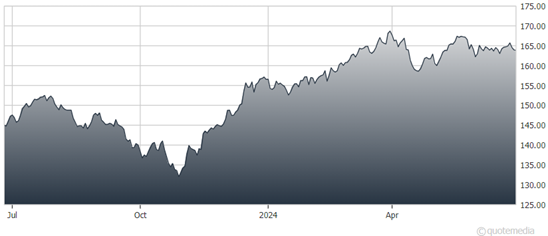US growth companies with the largest capitalizations continued to rise relentlessly, pulling the S&P 500 with them. Money continues to flow into these stocks. That increases their returns, but also raises their valuations and reduces their margins of safety. I like one ETF to capture a potential broadening of the bull market, the Invesco S&P 500 Equal Weight ETF (RSP), writes Bob Carlson, editor of Retirement Watch.
The flood of money further ties the S&P 500 more closely to the performance of these few stocks. Recently, the 10 largest capitalization stocks accounted for 35.7% of the S&P 500, a record going back to at least 1972, according to Ned Davis Research.
Global indexes have a similar experience. The 40 largest companies in the MSCI All-Country World Index are 37.1% of that index, and 30 of those companies are US-based. The index has a high valuation. The price-earnings ratio recently exceeded 26. While well above its historic average, it is below the highs reached at the top of the tech stock bubble in late 2001 and in late 2020 during the pandemic rally.
Invesco S&P 500 Equal Weight ETF (RSP)
Among the 10 largest positions in the S&P 500, five have P/E ratios above 30, and only one is below 20. The large growth stocks and the S&P 500 have done very well recently. The lowest return over the last 12 months among the 10 largest positions in the S&P 500 is about 8% by Apple Inc. (AAPL). No other stock among the group has a 12-month return below 24%.
But keep in mind that since the April 2022 peak, the return of the S&P 500 was below that of Treasury bills through April 2024, according to fund manager John Hussman. The rise in stocks that began last November looks a lot like a speculative or fear-of-missing-out rally.
I’ve been expecting that either the stock rally will broaden, or stocks will retreat, with the current market leaders likely to bear the brunt of any decline. As long as economic growth is positive, the odds favor more stocks participating in the gains.
Instead of following the traditional S&P 500 that weights stocks by capitalization, RSP tries to give each of the S&P 500 stocks equal weight, or around 0.24% of the fund.
That avoids extreme overweighting to a few stocks or sectors. Technology is only 14.98% of RSP, compared to about 32% of the S&P 500. Industrials are only slightly behind technology at 14.46% of RSP, while they are less than 8% of the S&P 500.
RSP will outperform the S&P 500 if more stocks participate in the market rise. I also expect RSP will do better than the traditional index in a market downturn. The fund was recently up 0.04% in four weeks, 4.7% so far in 2024, and 15.1% for the last 12 months.
Recommended Action: Buy RSP.


















